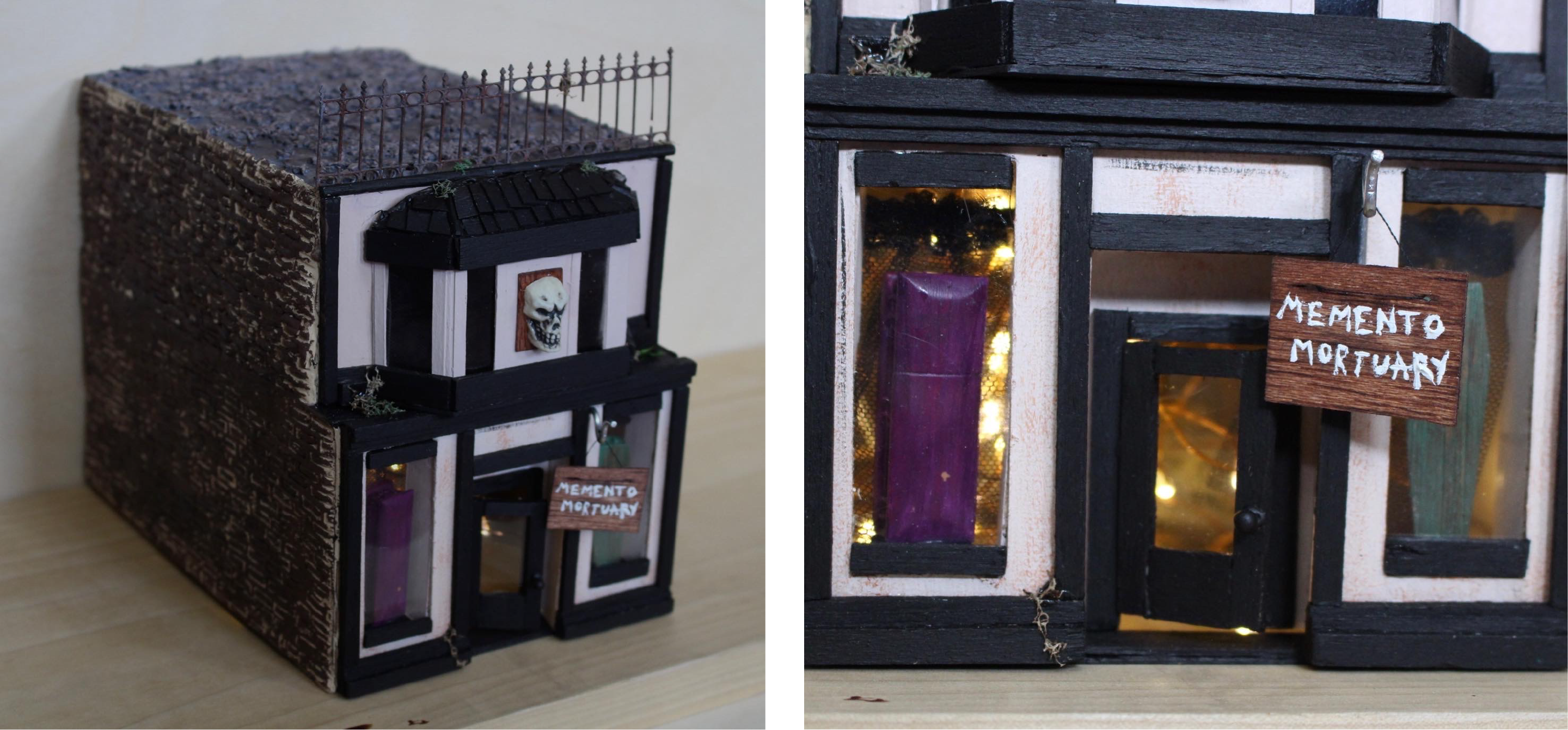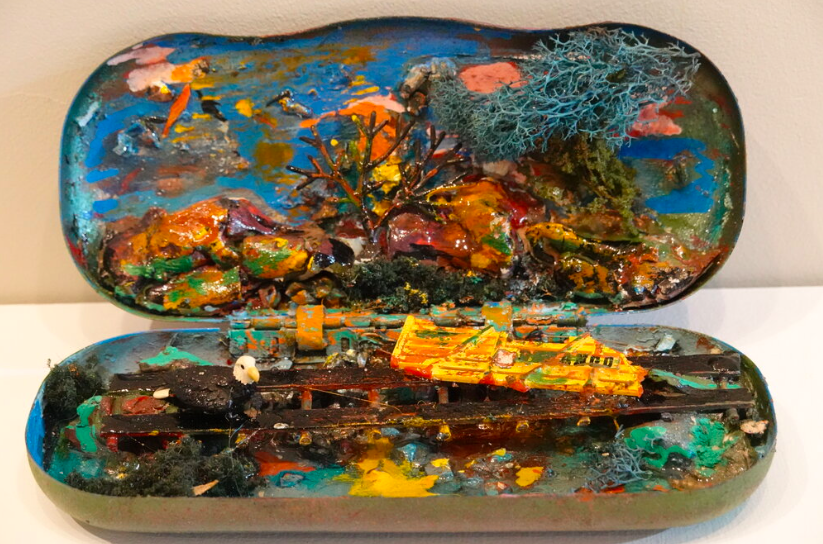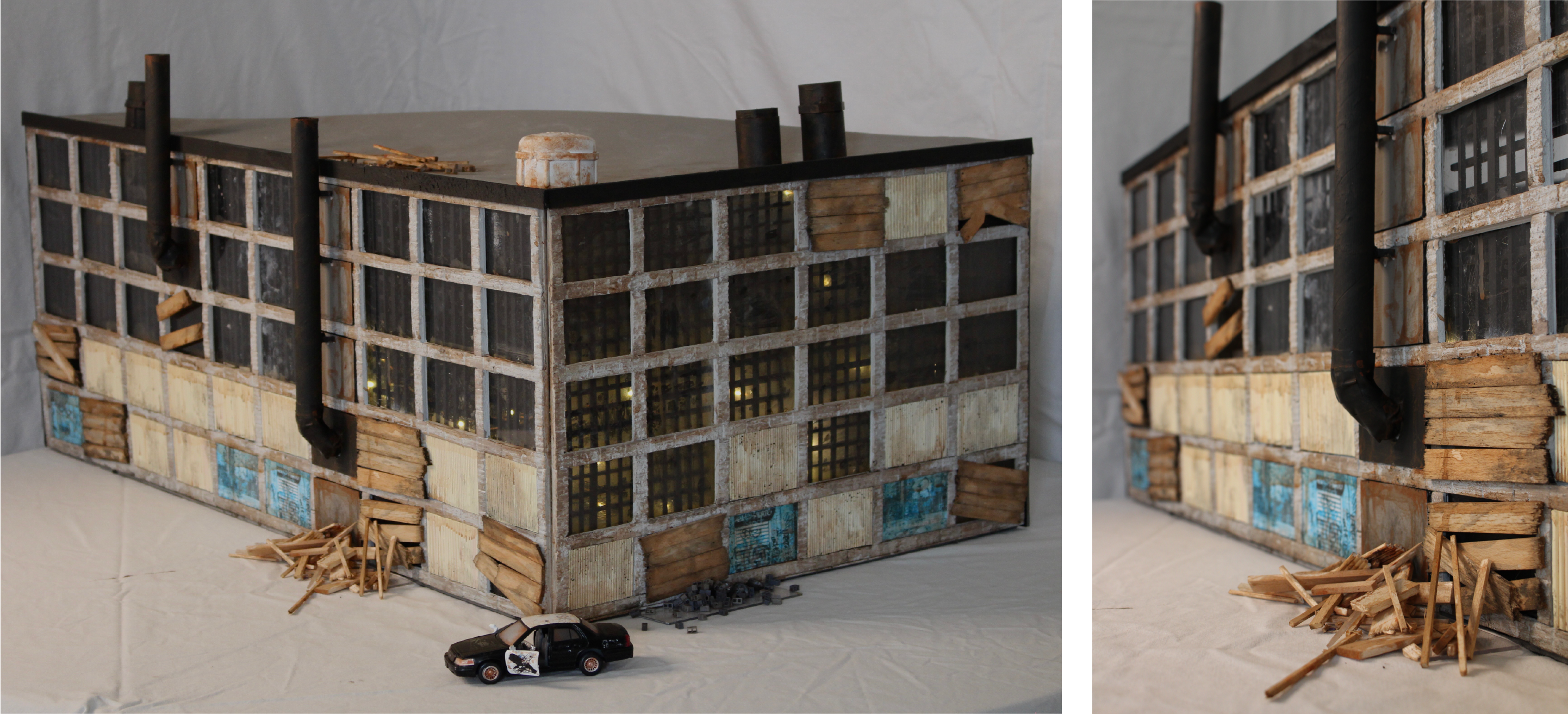How Diorama Artists Have Transformed Chicago’s Art Scene
Young adults today grew up with classic stop-motion films like “Coraline” and “The Fantastic Mr. Fox,” both of which have gained cult followings in recent years. Though mini models first became popularized long ago, the utilization of dioramas — miniature replicas of scenes — in these films and art exhibits like the Thorne Miniature Rooms contribute to the current heightened interest in dioramas as a form of art — especially in Chicago.
More diorama artists have been popping up in the city than ever before. The exhibit strongly influences the work of miniaturist Robert Off, who started producing miniature room boxes in 1998 after witnessing the Thorne Miniature Rooms in person. He creates about two miniature room boxes annually, but each room could “exist anywhere and in any time period,” according to Off.
Chicago-based author Marianne Malone feels equally compelled by the miniatures and recently wrote the children’s book series The Sixty-Eight Rooms based on the Art Institute exhibit.
Other creatives in Chicago have become inspired by the miniature art scene as a whole.
As Lincoln Park-based production designer Hannah Duncan grasped her favorite scalpel and meticulously carved out the final details of a skull in her miniature “Momento Mortuary,” she stated, “There’s a lot of nostalgia wrapped up in mini models, specifically with claymation. We are just so used to seeing dioramas on screen as art.”

Hannah Duncan’s “Memento Mortuary” sits on display in her Chicago apartment. Photo courtesy of Hannah Duncan.
College courses, miniature kits, and online influencers like Southern Gothic Dollhouse originally inspired Duncan to begin creating miniature models, but the craft’s ability to capture a bird’s-eye-view of the world and momentarily suspend viewers’ disbelief keeps her hooked. She believes that “there’s something so human about wanting to make little versions of the spaces that we encounter or live in … we really get to see everything.”
Chicago-based dioramist Marvin Tate found his way to miniature modeling in childhood.
“Your senses are toiled with at an early age. And for me, art came out of that. Art is tragedy and art is healing,” he said.
Being an artist was not celebrated in Tate’s culture growing up; in fact, it was actually considered a taboo. Despite this, Tate sleuthed around and discovered how to produce art in his own way.
“Making things small was always the way I had to approach things. It was almost like I had to hide it. So, I created my little world,” said Tate.
Creating these “little worlds” requires impressive technical skills and patience; realistically scaling objects to a miniature level is no easy feat. Maintaining the delicate illusion of a scaled-down reality involves extensive planning and routine calculations.
As Duncan stated, “If you have a fire hydrant at one scale and a fireman at another, they’re gonna look really awkward together.”
These preparations are particularly challenging when working with dainty materials on a tiny scale, but without them, mini models would not accurately imitate the real world. Duncan creates her scales by determining how the dimensions in her miniature world would translate to reality, though guesswork and intuition also come into play.
She stated, “I can be like, ‘This is what six feet looks like in this universe.’ … I feel like the longer you are doing it in one session, the more you get used to what things should look like in that universe.”
Diorama artists must maintain a precarious balance between mathematical calculations and more abstract elements of miniature models like messages and themes. While the subject of his art varies from personal narratives to social injustice, Tate also has a running theme in his work — found objects. The dioramas he builds highlight the dichotomy between functional household items and abstract art.
His art reiterates the overarching theme of found objects because “it’s what the laymen had around them to repurpose and revitalize … and that’s the soul of art.”
Artistic subjects come to Tate in memories, by coincidence, in dreams and through his senses. Over a decade ago, Tate’s eyeglasses broke in their case over a decade ago and created a “bizarre environment” within the case. When Tate spotted this, inspiration struck. “It was like improvisation. I had the material. I had this texture in my hand. I just started building.” He went on to produce hundreds of whimsical dioramas in eyeglass cases.

Marvin Tate’s “Marvin’s Stroll No. 14” sits on display in his Chicago apartment. Photo courtesy of Marvin Tate.
Duncan ensures that her pieces have a common theme stringing them together by focusing on old, abandoned spaces. “I really like dark, macabre themes. I like abandoned spaces. Liminal spaces. Feelings of nostalgia,” she said.
Duncan heavily incorporates natural elements into these abandoned spaces; vines crawl into broken windows and grime covers brick walls in her creations. According to Duncan, “You can imagine how this fictional space would have worn away throughout natural time. You can kind of manipulate a timeline and manipulate an environment to fit your own mood.”

Hannah Duncan’s abandoned studio sits on display in her Chicago apartment. Photos courtesy of Hannah Duncan.
While Duncan physically manipulates these elements with her art, Tate opts for a more abstract method of environment manipulation. Currently, Tate is in the process of creating mini sculptures from piano parts.
According to Tate, “I’m not just using the keys. Also the more obscure parts of a piano like tune pins or hammers.”
Tate enjoys incorporating different mediums and experimenting with new ideas; he intentionally chose piano parts as the primary material for this project because it connects to his passion for music. When spectators see the piece, “they inherently understand that it originated from someone with a musical background,” according to the dioramist.
Duncan has similarly been drawn to multimedia projects, highlighting how they allow her to “control the entire narrative” formed with her art.
The versatile, limitless nature of building miniature models provides her with endless opportunities to play around with different materials and mediums. By combining acrylic paint, baking soda and coffee grounds, she produces multiple shades of her own dirt. Duncan then employs the dirt as a through line between projects to make her portfolio’s work tonally similar.
Though Duncan doubts the details of her finished projects at times, one of the most satisfying aspects of creating her miniatures involves photography.
“I really enjoy photographing them,” according to Duncan. “That’s the final step where you get to see it in a different perspective. When you just see the cropped photo and it looks like you’re just looking at a normal room, I think that can be really rewarding.”

Hannah Duncan’s abandoned warehouse sits on display in her Chicago apartment. Photos courtesy of Hannah Duncan.
The demand for artists in Chicago is higher than ever before. Chicago has the seventh-highest employment level for painters, sculptors, and illustrators in the United States, according to the U.S. Bureau of Statistics. More publicized art like murals also contributes to Chicago’s culture; there are over 400 murals in the city, according to the Chicago Data Portal. Based on this data, the art community in Chicago will continue growing and thriving.
Despite pursuing less traditional art forms, Duncan and Tate feel incredible support from artists and art enthusiasts alike. Art lovers can step into exhibits, examine art on public buildings, purchase zines from local creatives and engage in discussions to participate in the welcoming space. The art community in Chicago simply would not be the same without each and every artist—especially miniaturists.
Header Illustration by Yù Yù Zander




NO COMMENT